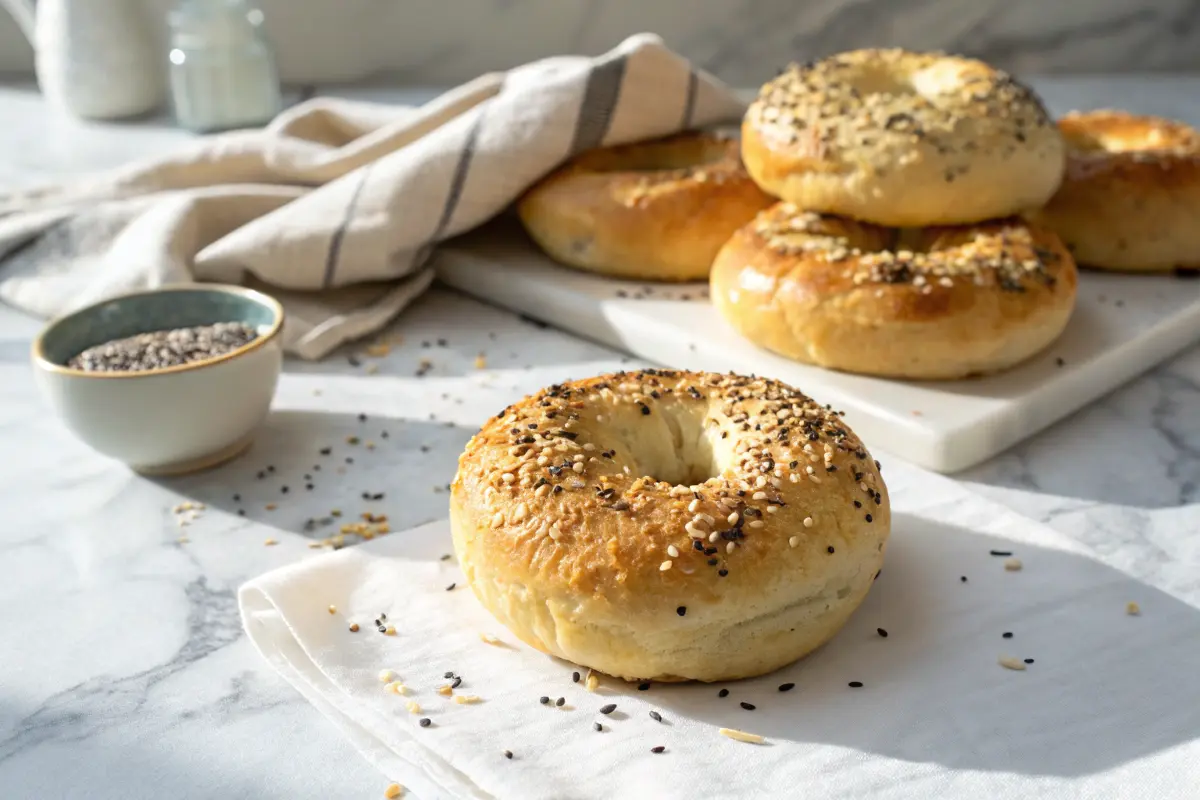Gluten Free Bagels: 5-Ingredient Recipe
Gluten free bagels are a delicious and healthy alternative to traditional bagels, perfect for anyone with dietary restrictions or those looking to explore new flavors. If you’ve ever craved a warm, chewy bagel but thought gluten-free options were out of reach, think again! This recipe is simple, quick, and uses only five ingredients to create the perfect gluten free bagels.
Whether you’re managing celiac disease, exploring a gluten-free lifestyle, or simply looking for a healthier alternative, this recipe is for you. In just a few simple steps, you’ll learn how to make gluten free bagels that rival any bakery version. Plus, with only five ingredients and no fancy equipment required, it’s perfect for busy mornings or weekend baking projects. Get ready to enjoy bagels that are soft on the inside, slightly crispy on the outside, and completely guilt-free. Let’s dive in!
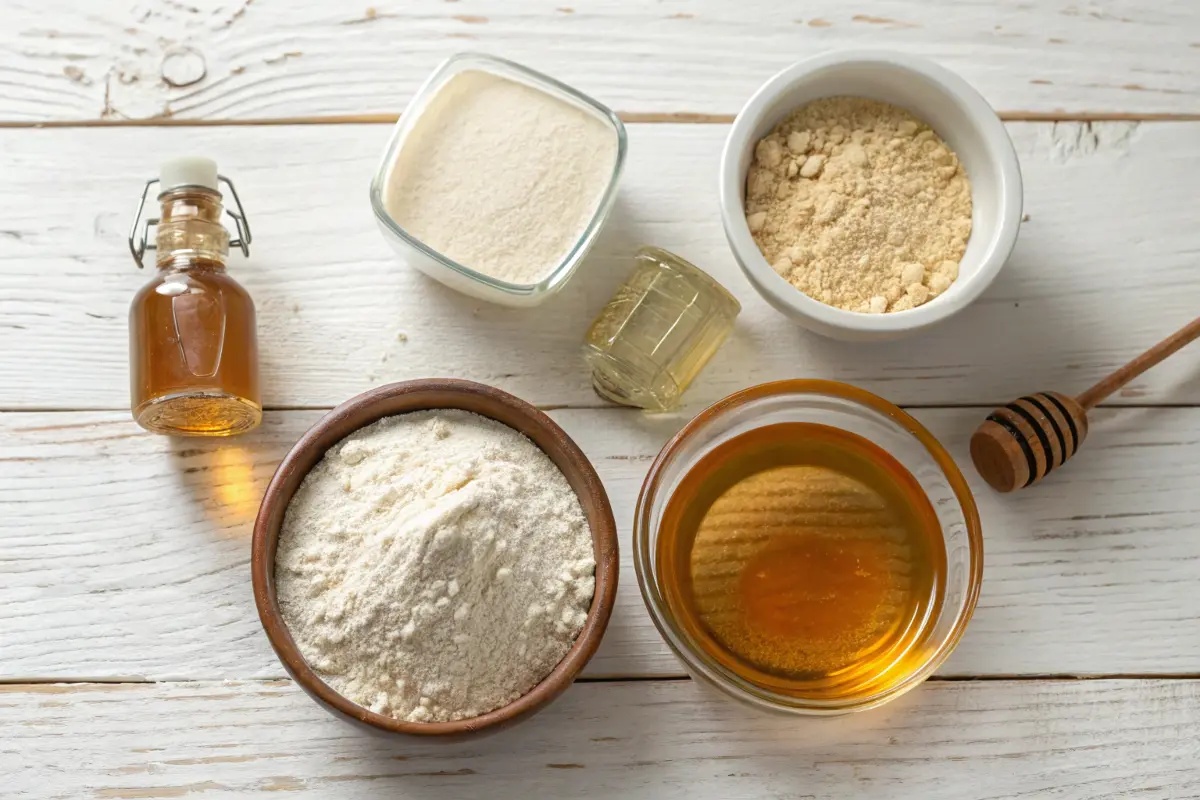
Ingredient Breakdown
Making gluten free bagels is easier than you think, and it all starts with the right ingredients. Here’s what you’ll need:
- 2 ½ cups gluten-free flour blend (I recommend Bob’s Red Mill 1:1 Baking Flour for its perfect texture).
- 1 teaspoon xanthan gum (omit if your flour blend already includes it).
- 1 packet (2 ¼ teaspoons) active dry yeast (ensure it’s gluten free).
- 1 ½ cups warm water (around 110°F—not too hot or it’ll kill the yeast).
- 2 tablespoons honey or sugar (for sweetness and to activate the yeast).
- 1 teaspoon salt (enhances flavor; optional but recommended).
- Toppings of choice (e.g., sesame seeds, poppy seeds, everything bagel seasoning).
Substitutions and Tips:
- For a low-calorie option, swap honey with a sugar-free sweetener.
- If you’re out of xanthan gum, try psyllium husk as a binder.
- Use almond flour for a nuttier flavor, but adjust the water slightly as it absorbs more moisture.
Step-by-Step Instructions
Prep: Getting Ready
- Gather Your Tools: You’ll need a large mixing bowl, a baking sheet, parchment paper, and a pot for boiling.
- Activate the Yeast: In a small bowl, combine warm water, honey (or sugar), and yeast. Let it sit for 5–10 minutes until frothy.
Making the Dough
- Mix Dry Ingredients: In a large bowl, whisk together the gluten free flour, xanthan gum (if needed), and salt.
- Combine Wet and Dry: Slowly pour the yeast mixture into the dry ingredients. Stir until a dough forms.
- Knead the Dough: Lightly flour your hands and a clean surface. Knead the dough for 3–5 minutes until smooth and elastic.
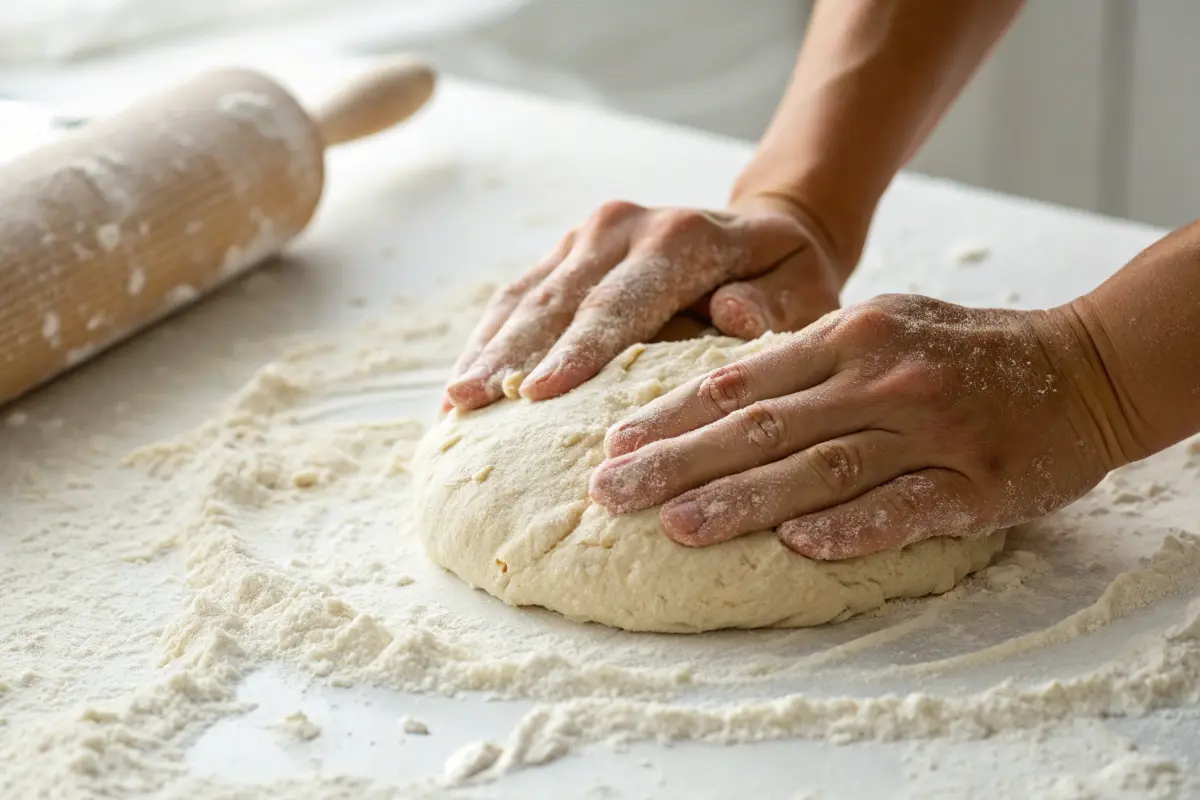
Shaping the Bagels
- Divide the Dough: Split the dough into 6 equal portions. Roll each into a ball, then poke a hole in the center to form a bagel shape.
- Let Them Rest: Place the shaped bagels on a parchment-lined baking sheet. Cover with a clean towel and let them rest for 20 minutes.
Boiling for Perfect Texture
- Preheat the Oven: While the bagels rest, preheat your oven to 425°F and bring a large pot of water to a gentle boil.
- Boil the Bagels: Carefully drop each bagel into the boiling water. Cook for 1–2 minutes per side, then remove with a slotted spoon.
Baking to Golden Perfection
- Add Toppings: While the bagels are still wet from boiling, sprinkle your favorite toppings (e.g., sesame seeds, poppy seeds).
- Bake: Transfer the bagels to the baking sheet and bake for 20–25 minutes, or until golden brown.
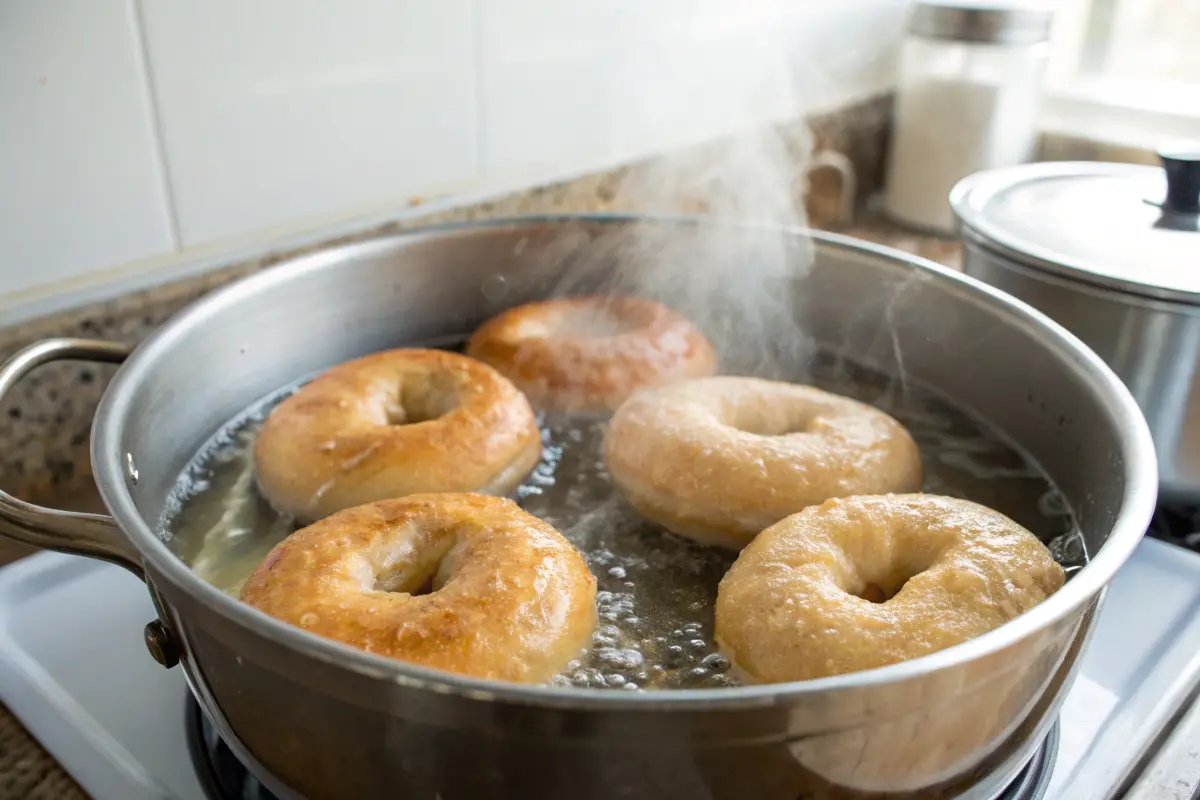
Cooling and Serving
- Cool Completely: Let the gluten free bagels cool on a wire rack for at least 10 minutes. This helps them set and improves texture.
- Slice and Enjoy: Serve warm with your favorite spreads, like cream cheese, avocado, or almond butter.
By following these steps, you’ll have a batch of homemade gluten free bagels that are soft, chewy, and utterly satisfying. Whether you’re new to gluten free baking or a seasoned pro, this recipe is sure to become a staple in your kitchen!
Nutrition Facts
Here’s a breakdown of the nutritional content per serving (1 gluten-free bagel):
| Calories | Carbs | Protein | Fat | Fiber |
|---|---|---|---|---|
| 220 | 45g | 5g | 2g | 3g |
These gluten free bagels are naturally free from gluten and can easily be adapted to fit other dietary needs. For a lower-carb option, consider using almond flour instead of a traditional gluten free flour blend. Additionally, swapping honey for a sugar-free sweetener can reduce the calorie count while keeping the flavor intact.
Pro Tips / Variations
Common Mistakes to Avoid
- Over-kneading the Dough: Gluten free dough doesn’t need as much kneading as traditional dough. Overworking it can lead to dense bagels.
- Skipping the Boiling Step: Boiling is essential for that classic chewy texture. Don’t skip it!
- Using Cold Water for Yeast: Yeast needs warm water to activate. If the water is too cold, the dough won’t rise properly.
Quick Hacks for Busy Cooks
- Prep Ahead: Make the dough the night before and let it rest in the fridge overnight. Shape and bake in the morning for fresh bagels.
- Freeze for Later: Bake a double batch and freeze the extras. Simply toast them straight from the freezer for a quick breakfast.
Flavor Swaps and Variations
- Sweet Option: Add cinnamon and raisins to the dough for a sweet twist.
- Savory Option: Mix in garlic powder, onion powder, and herbs for a savory flavor.
- Low-Carb Version: Use almond flour and a sugar-free sweetener to reduce carbs.
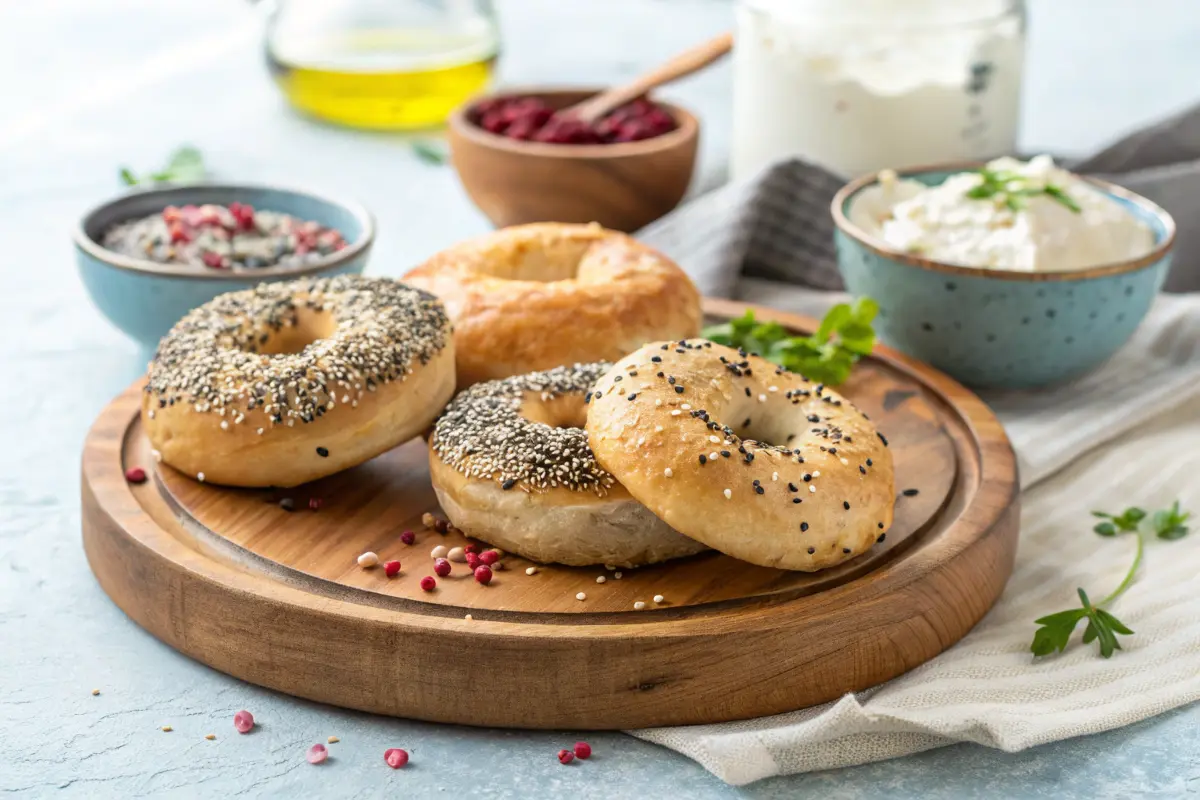
Serving Suggestions & Pairings
Classic Breakfast Spread
- Cream Cheese: A classic pairing for gluten-free bagels. Try flavored varieties like chive or strawberry.
- Smoked Salmon: Add a slice of smoked salmon, capers, and red onion for a gourmet touch.
- Avocado Mash: Spread mashed avocado on your bagel and top with a sprinkle of chili flakes or everything bagel seasoning.
Creative Lunch Ideas
- Bagel Sandwiches: Use your gluten free bagels as a base for sandwiches. Fill with turkey, lettuce, tomato, and mustard for a hearty lunch.
- Egg and Cheese: Make a breakfast sandwich with scrambled eggs, cheese, and a slice of ham or bacon.
Sweet Treats
- Peanut Butter and Banana: Spread peanut butter on your bagel and top with banana slices for a quick, satisfying snack.
- Nutella and Berries: For a dessert-like option, spread Nutella and add fresh berries.
Leftover Uses
- Bagel Chips: Slice leftover bagels thinly, brush with olive oil, and bake at 350°F until crispy. Perfect for dipping!
- Breadcrumbs: Dry out stale bagels, then pulse in a food processor to make gluten-free breadcrumbs.
Discover unique bagel topping ideas.
By experimenting with these serving ideas and variations, you can make your gluten free bagels a versatile staple in your kitchen. Whether you’re enjoying them for breakfast, lunch, or a snack, they’re sure to satisfy every craving!
For more healthy breakfast ideas, check out our Healthy Breakfast Ideas collection.
Why You’ll Love This Recipe
If you’ve been searching for the perfect gluten-free bagels, this recipe is your answer. Here’s why it’s a winner:
- Simple and Quick: With just five ingredients and no complicated steps, this recipe is perfect for beginners and busy bakers alike.
- Customizable: Whether you prefer sweet or savory, you can easily adapt these bagels to suit your taste.
- Diet-Friendly: Naturally gluten-free, this recipe can also be tweaked for low-carb or sugar-free diets.
- Bakery-Quality Results: Say goodbye to store-bought gluten-free bagels that lack flavor or texture. These are soft, chewy, and utterly satisfying.
As someone who’s tried countless gluten free recipes, I can confidently say this one stands out. It’s a game-changer for anyone craving a delicious, homemade bagel without the gluten.
FAQ
What bagels have no gluten?
Gluten-free bagels are made without wheat, barley, or rye. Instead, they use alternative flours like almond flour, rice flour, or a gluten free flour blend. This recipe uses a trusted gluten-free flour blend for the best texture.
Are gluten-free bagels healthier?
Gluten-free bagels can be healthier for those with celiac disease or gluten sensitivity. However, they can still be high in carbs and calories, so moderation is key. Opt for whole-grain gluten-free flours or almond flour for added nutrients.
Can I buy gluten free bagels?
Yes, many grocery stores and specialty bakeries offer gluten-free bagels. However, making them at home ensures you control the ingredients and avoid unnecessary additives.
Can I eat a bagel every day?
While you can enjoy a bagel daily, it’s important to balance your diet with other nutritious foods. Gluten free bagels can be part of a healthy diet when paired with protein, healthy fats, and veggies.
These gluten free bagels are a testament to how simple, wholesome ingredients can create something truly special. With just five ingredients and a little effort, you can enjoy bakery-quality bagels that are soft, chewy, and completely gluten-free. Whether you’re new to gluten free baking or a seasoned pro, this recipe is sure to become a favorite.
So, why not give it a try? Whip up a batch, experiment with toppings, and savor the satisfaction of homemade gluten-free bagels. And if you’re hungry for more, explore other gluten-free recipes on the blog—there’s always something delicious waiting for you!
The Science Behind Gluten Free Bagels
Understanding the science behind gluten-free baking can help you achieve the perfect texture and flavor. Here’s what you need to know:
Why Gluten Free Dough Behaves Differently
- Lack of Gluten: Gluten is a protein that gives traditional bagels their chewy texture. Without it, gluten free bagels rely on binders like xanthan gum or psyllium husk to mimic that structure.
- Moisture Balance: Gluten-free flours absorb moisture differently. Too much liquid can make the dough sticky, while too little can result in dry, crumbly bagels.
Tips for Perfect Texture
- Use a High-Quality Flour Blend: Not all gluten-free flours are created equal. A blend with a mix of rice flour, tapioca starch, and potato starch works best for bagels.
- Don’t Skip the Boiling Step: Boiling sets the crust and gives gluten free bagels their signature chewiness.
Common Challenges and Solutions
- Dense Bagels: This often happens if the dough is over-kneaded or the yeast isn’t activated properly. Ensure your water is warm (not hot) and let the dough rest adequately.
- Cracking or Crumbling: Add a bit more xanthan gum or psyllium husk to improve elasticity.
By understanding these principles, you’ll be better equipped to troubleshoot and perfect your gluten free bagels recipe.

